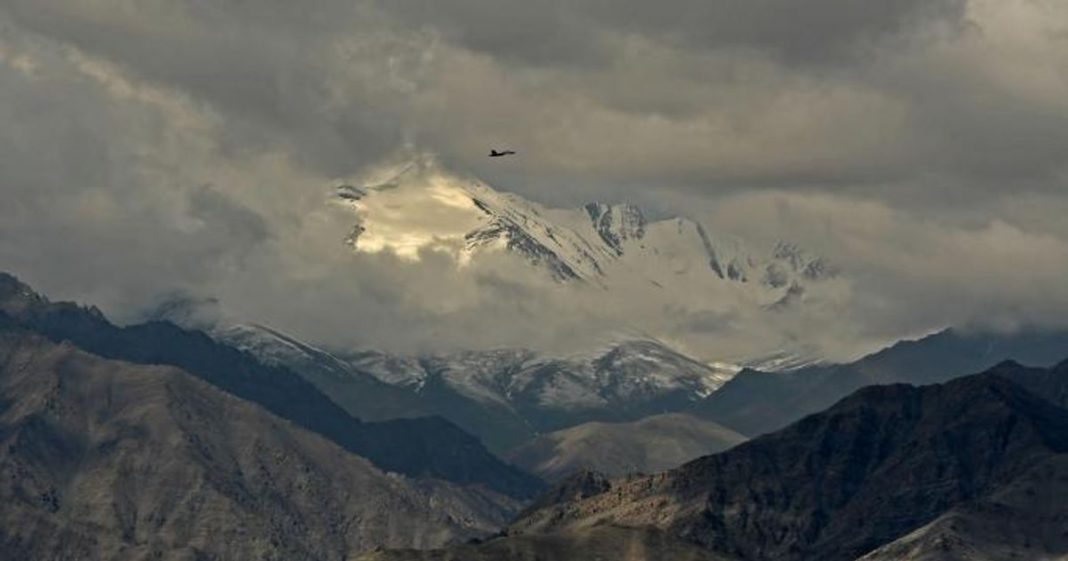China troops used “microwave” weapons during the Himalayan stand-off with Indian soldiers to force them to withdraw, Jin Canrong, a professor in Beijing told his students. The weapon burned the Indian soldier’s human tissue and “turned the mountain tops into a microwave oven,” said the professor.
“Those occupying the hilltops all began to vomit,” soon after the weapons were deployed, Jin told his students.
“They couldn’t stand up, so they fled. This was how we retook the ground,” Jin further explained. The decision to use microwave weapons was taken because of the high altitude. It heats up the water under the skin to high temperatures, and also causes nausea, headaches, and vomiting.
The weapons were deployed after a deadly face off between Chinese and Indian soldiers in June of this year, which killed 20 Indian soldiers as a consequence, reported The Times. It was the first time in 53 years that the two nuclear-armed forces came so close to war, that too in the world’s highest-altitude battlefield.
Read more: Geo-political implications of the China-India standoff at Ladakh
China’s alleged use to the weapon would be the first time it has ever been used in a battlefield. The Poly WB-1 was displayed in 2014, during an air show, after which it was given to Chinese naval forces.
Although the radiation used in the weapons is in millimeter waves instead of microwaves, they get the name “microwave” weapons because of their similar effect to the type of oven.
India rejects China’s claims
India denies China’s claims of using “microwave” weapons on Indian soldiers, calling it “fake news”. It also said that its “soldiers are still there.”
Indian officials are convinced that this alleged use of the weapons is “pure and poor psyops from China.” They also assured that Indian soldiers will stay put in the disputed border region.
The two countries have moved tens of thousands of troops and weapons into the high-altitude region after a violent clash in June left 20 Indian soldiers dead and an unknown number of Chinese casualties. Several rounds of talks have failed to significantly ease tensions.
The recent clashes between China and India are a manifestation of long-standing tensions between the two nuclear-armed neighbors, according to an expert on South Asian geopolitics.
Read more: Chinese soldier who strayed across Ladakh border is returned by India
“The Himalayan border problem between Pakistan, India, and China is not a new issue – it goes back at least 70 years,” Umit Alperen, a researcher and professor, said in an online discussion with Cemal Demir, head of the Istanbul-based South Asia Strategic Research Center (GASAM).
“With the [coronavirus] pandemic, economic problems have increased in all countries. In order to preserve their power, governments worldwide have started using a populist and nationalistic discourse in domestic policies, which is also reflected in their foreign policies,” he said.
The escalation between Beijing and New Delhi, he added, has proven that relations between Asia’s major powers are “on thin ice amid a changing and more chaotic global system.”
China does not recognize Ladakh union territory
The spokesperson for the Chinese Foreign Ministry, Zhao Likjian, announced that China does not recognize the Ladakh Union Territory which is illegally set up by India. The spokesperson was addressing a press briefing in Beijing.
“First, I want to make it clear that China does not recognize the Ladakh Union Territory, illegally set up by the Indian side and Arunachal Pradesh,” he said during his regular briefing. “We stand against the development of infrastructure facilities, aimed at military contention along the border area, ” he added.
Zhao further pointed out that for some time, the Indian side had been ramping up infrastructure development along the border and stepping up a military deployment that he claimed was the root-cause for the tensions between the two sides.
“We urge the Indian side to earnestly implement our consensus and refrain from actions that might escalate the situation and take concrete measures to safeguard peace and tranquility along the border,” he added. The new bridges will facilitate faster movement of troops and weapons closer to the border, he claimed.
Read more: China has humiliated India on the Ladakh border by acquiring Indian territory














